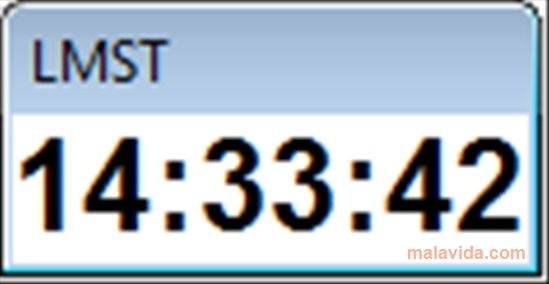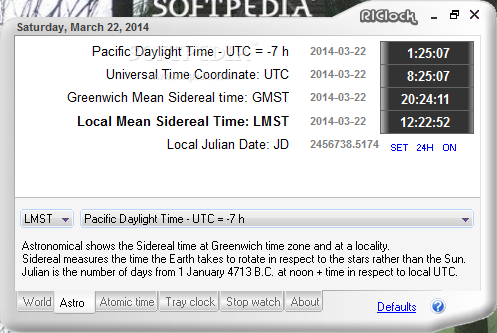
An easy-to-use astronomical almanac from the U.S. Naval Observatory. and. About MICA MICA, the Multiyear Interactive Computer Almanac, is a software system that provides high-precision astronomical data in tabular form for a wide variety of celestial objects. The program computes many of the astronomical quantities tabulated in the. However, MICA can compute this information for specific locations and flexible times, thus eliminating the need for table look-ups and additional hand calculations. Designed primarily for professional applications, MICA is intended for intermediate-to-advanced users. Basic knowledge of astronomical terminology and positional astronomy is assumed.
MICA provides essential data for use in Astronomy and astrophysics Space science Geodesy and surveying Geophysics Meteorology Environmental science Operations planning Accident reconstruction and litigation Illumination engineering Architecture Photography MICA was first released in 1993 for MS-DOS and Apple Macintosh systems. MICA 2.0 was updated for Windows and modern Apple Macintosh systems and released in August 2005. MICA 2.0 provided all the data available in earlier versions of the software and included several new. The current version of MICA is 2.2.2, which was released in January 2012. Features MICA can perform the following types of computations:. Precise positions for the Sun, Moon, major planets, Pluto, selected asteroids, selected bright stars, and cataloged objects (e.g. Stars, quasars, galaxies, etc.) using external catalogs provided with the program.
The clock is hand-tuned to run within one or two seconds per week of perfect sidereal time at room temperature. Objects in the sky are located by their celestial position. This position is commonly given as 'Right Ascension' and 'Declination'. Sidereal Clock Once you have a SIDEREAL CLOCK on your wall, if you see that it's 5:55 local sidereal time, you know that Betelgeuse and Orion are on the meridian. If it's 18:37 sidereal time, Vega and the constellation Lyra are on the meridian.
Local Sidereal Time
Up to ten different position types are available (depending on which object was chosen). Various astronomical time and reference system quantities (e.g. Sidereal time, nutation and obliquity, equation of the equinoxes, Earth Rotation Angle, calendar/Julian date conversions, and delta T).
Twilight, rise, set, and transit times for major solar system bodies, selected bright stars, selected asteroids, and cataloged objects. Physical ephemerides useful for making observations of the Sun, Moon, major planets, and Pluto. Both illumination and rotation parameters are available for all listed bodies, except for the Sun. Low-precision topocentric data describing the configuration of the Sun, Moon, major planets, Pluto, and selected asteroids at specified times and locations. MICA also includes a sky map option as an aid in locating the objects.
Sidereal Clock For Macbook
Visibility information for solar and lunar eclipses, as well as transits of Mercury and Venus. Four different types of positions of Jupiter and the Galilean Satellites and offsets of the satellites from Jupiter. Dates and circumstances of various astronomical phenomena (solstices and equinoxes, apsides of Earth and the Moon, moon phases, conjunctions, oppositions, and greatest elongations of Mercury and Venus). A phenomena search feature is also available, which generates a table similar to the 'Diary of Phenomena' contained in section A of.

New features and changes in MICA 2.2/2.2.1/2.2.2 include. Earth Rotation Angle (ERA) and the equation of the origins. Apside times (perigee/apogee of the Moon, perihelion/aphelion of Earth) as a stand alone computation or within the Phenomena Search function.
The DeltaT.val file has been updated with new data. The date with the first predicted value for this file is 2455745.0 (2011 July 2 12:00). Computations of future eclipses and transits now allow the user to set their own value of delta T. Configurations of major solar system bodies and asteroids, lunar eclipses, and all phenomena calculations now include 'Zone' as a time system option.
Magnitudes have been added to the positional information provided for solar system bodies and catalog stars. The International Astronomical Union (IAU) 2000B nutation model was replaced with the 2000K nutation model described in. Lunar distance has been added to the 'Phases of the Moon' output table. Physical ephemeris algorithms have been updated to account for the aberration of the Sun due to the planet's motion. Physical ephemeris calculations have been updated with data from the. The 'Planet' column header in the solar conjunctions output has been renamed to 'Object' to cover both planets and asteroids. MICA Windows sample screens (Windows 7):.
Current Sidereal Time
MICA Mac sample screens (Mac OS X):. 'Delta T' File Updates For highest accuracy, the supplied file of delta T values should be updated periodically.
Delta T is the difference between Terrestrial Time (TT) and Universal Time (UT1). For information about the most recent delta T file, see. Software Updates Version 2.2.2 is the current version of MICA. It was released in January 2012 and is valid for years 1800 through 2050. This version includes several corrections and revisions to the 2.2.1 version released in April 2010 along with a few new features.
See the for further information. Full versions of the software and updates are available from Willmann-Bell. To determine which you need, please see the; otherwise please see the information below.
Sidereal Clock is a tiny application that allows users to keep track of local mean sidereal time. The program does function appropriately, but its complete lack of other features or options may be disappointing to some users. This program may well be the smallest and simplest program we've ever reviewed. Users can enter their time zone or have the clock detect it automatically, and users can also enter their longitude. But that's it.
The clock is small, about 1 inch by 2 inches, and displays sidereal time in hours, minutes, and seconds. An online Help file gives a brief description of each of the clock's features. Users access the program's settings by right-clicking on the clock's face, and it may seem at first that the program contains several other features, including the ability to display universal time and use a calculator and alarms. However, attempting to access these features results in a message encouraging users to upgrade to the commercial version of the program. If you truly need a sidereal clock and nothing more, this program is fine. But if you're looking for features of any sort, you're better off with something else.
Sidereal Clock is free. It comes as a ZIP file but installs and uninstalls without issues. We recommend this program to all users seeking a very basic way to keep track of sidereal time.